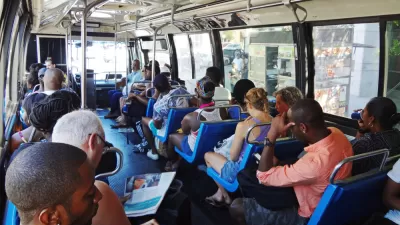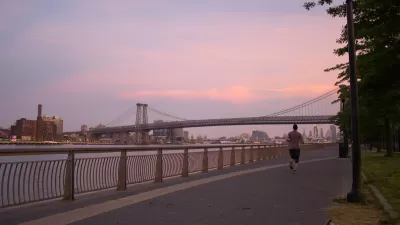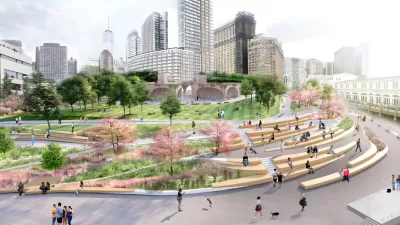For decades, New Jersey's coastal communities have been the beneficiaries of artificial beach nourishment, at great expense. After Sandy washed away hundreds of million of dollars of sand, some are suggesting it's time for a strategic retreat.

Superstorm Sandy has turned a spotlight on the long simmering debate over the artificial maintenance of beaches along New Jersey's coast with sand pumped from offshore. After Sandy swept away "enormous quantities of sand," both proponents and opponents of "artificial beach nourishment" are reconsidering the practice, reports Cornelia Dean.
"Opponents of beach nourishment argue that undeveloped beaches deal well with storms. Their sands shift; barrier islands may even migrate toward the mainland. But the beach itself survives, because buildings and roads do not pin it down," says Dean. "By contrast, replenishment projects often wash away far sooner than expected. The critics say the best answer to coastal storms is to move people and buildings away from the water, a tactic some call strategic retreat."
"Supporters of these projects counter that beaches are infrastructure - just like roads, bridges and sewer systems - that must be maintained. They say beaches attract tourists and summer residents, conferring immense economic benefits that more than outweigh the costs of the projects. Also, they argue, these beaches absorb storm energy, sparing buildings inland."
FULL STORY: Costs of Shoring Up Coastal Communities

Study: Maui’s Plan to Convert Vacation Rentals to Long-Term Housing Could Cause Nearly $1 Billion Economic Loss
The plan would reduce visitor accommodation by 25,% resulting in 1,900 jobs lost.

North Texas Transit Leaders Tout Benefits of TOD for Growing Region
At a summit focused on transit-oriented development, policymakers discussed how North Texas’ expanded light rail system can serve as a tool for economic growth.

Why Should We Subsidize Public Transportation?
Many public transit agencies face financial stress due to rising costs, declining fare revenue, and declining subsidies. Transit advocates must provide a strong business case for increasing public transit funding.

How to Make US Trains Faster
Changes to boarding platforms and a switch to electric trains could improve U.S. passenger rail service without the added cost of high-speed rail.

Columbia’s Revitalized ‘Loop’ Is a Hub for Local Entrepreneurs
A focus on small businesses is helping a commercial corridor in Columbia, Missouri thrive.

Invasive Insect Threatens Minnesota’s Ash Forests
The Emerald Ash Borer is a rapidly spreading invasive pest threatening Minnesota’s ash trees, and homeowners are encouraged to plant diverse replacement species, avoid moving ash firewood, and monitor for signs of infestation.
Urban Design for Planners 1: Software Tools
This six-course series explores essential urban design concepts using open source software and equips planners with the tools they need to participate fully in the urban design process.
Planning for Universal Design
Learn the tools for implementing Universal Design in planning regulations.
City of Santa Clarita
Ascent Environmental
Institute for Housing and Urban Development Studies (IHS)
City of Grandview
Harvard GSD Executive Education
Toledo-Lucas County Plan Commissions
Salt Lake City
NYU Wagner Graduate School of Public Service





























